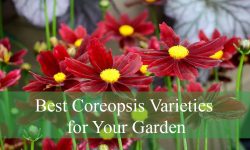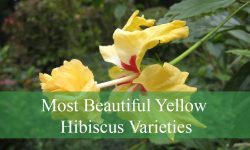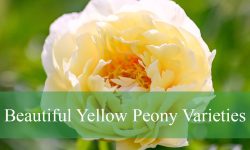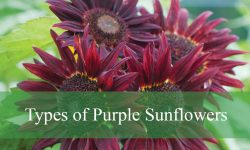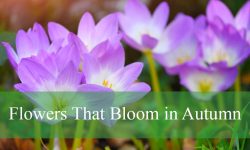With their sweet fragrance, colorful tubular blooms, and ability to attract hummingbirds, honeysuckles are beloved by gardeners around the world. These versatile plants come in many forms—from climbing vines to dense shrubs—making them a perfect addition to trellises, fences, or even privacy hedges. Exploring the different types of honeysuckle plants can help you find the right match for your landscape and climate.
There are over 180 known species of honeysuckle, but only a select few are commonly grown in home gardens. In this guide, we’ll introduce 30 stunning types of honeysuckle plants, complete with pictures, identifying features, flowering times, and USDA hardiness zones. Whether you prefer the bold trumpet flowers of Lonicera sempervirens or the delicate fragrance of Lonicera fragrantissima, there’s a honeysuckle for every setting.
Understanding the different types of honeysuckle plants can also help you make informed choices when it comes to maintenance, invasiveness, and pollinator support. From native North American varieties to showy Asian cultivars, each plant has its own charm and care requirements. Let’s take a closer look at these beautiful and diverse honeysuckles.
Different Types of Honeysuckle Plants
Privet Honeysuckle
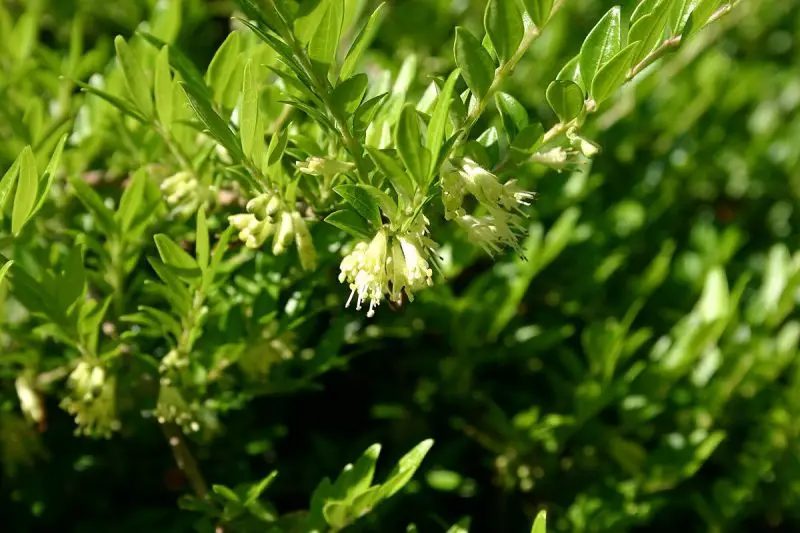
Privet Honeysuckle (Lonicera pileata) is a low-growing, semi-evergreen shrub with a dense, spreading habit and graceful arching branches. Its small, glossy green leaves resemble those of privet, which gives this honeysuckle its common name. In spring, it produces inconspicuous creamy-white tubular flowers nestled among the foliage, followed by small purplish-black berries in late summer.
This species is well-suited to USDA zones 6 through 9 and prefers moist, well-drained soil in full sun to partial shade. It typically grows 2 to 4 feet tall with a spread of 4 to 6 feet, making it ideal as a groundcover or low hedge. Pruning can be done in late winter or early spring to maintain its compact form. Once established, it is drought-tolerant and requires minimal care beyond occasional trimming.
Privet Honeysuckle is valued in landscape design for its ability to suppress weeds and stabilize soil on slopes and banks. While not a major pollinator plant, it still offers modest ecological benefits by providing shelter and berries for birds. Its neat appearance and adaptability make it a popular choice for both formal and naturalized gardens.
Gold Flame Honeysuckle
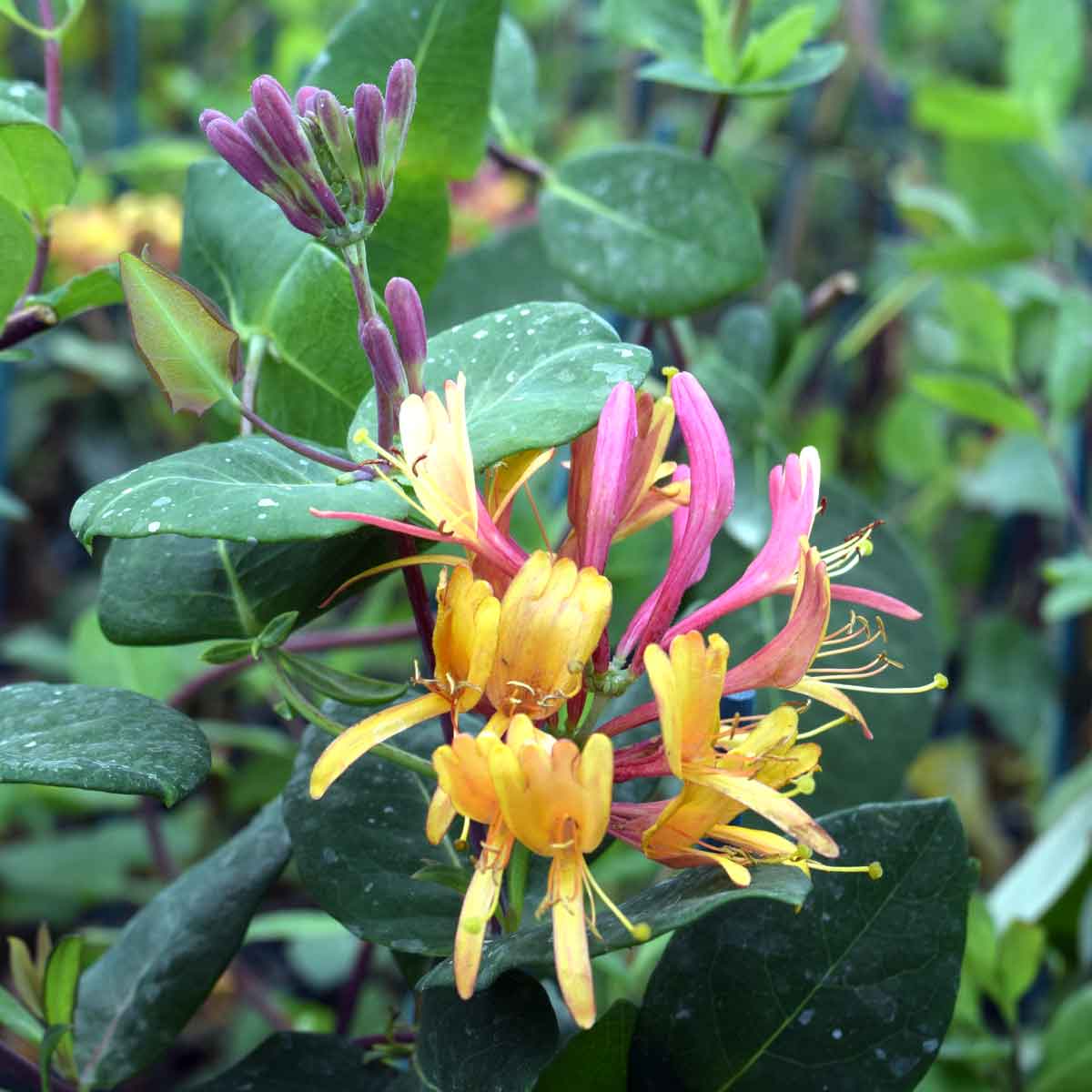
Gold Flame Honeysuckle (Lonicera × heckrottii ‘Gold Flame’) is a hybrid variety celebrated for its long-lasting, fragrant blooms and vigorous climbing habit. Its flowers emerge in clusters of tubular blooms with pinkish-red outer petals and golden-yellow interiors, attracting hummingbirds and butterflies throughout the season. Flowering begins in late spring and can continue intermittently until early fall, especially in warmer regions.
This honeysuckle thrives in USDA zones 5 through 9, preferring full sun and fertile, well-drained soil. It can reach 10 to 15 feet in height when supported by a trellis or fence, and occasional pruning after flowering will encourage continued blooming and maintain its shape. It benefits from mulching around the base to retain moisture and protect roots during colder months.
Gold Flame Honeysuckle is widely planted for its ornamental value, offering vibrant color and sweet fragrance in cottage gardens, wildlife gardens, and vertical landscapes. Its extended bloom time and strong nectar supply make it a magnet for pollinators. Unlike some other honeysuckles, it is non-invasive and easy to manage, making it a responsible and beautiful addition to diverse garden settings.
Burmese Honeysuckle
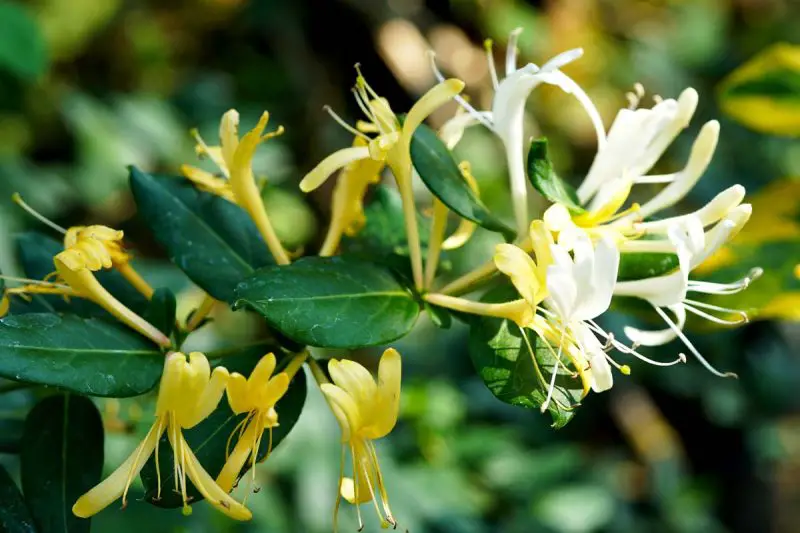
Burmese Honeysuckle (Lonicera hildebrandiana) is a tropical, evergreen climber known for its large, fragrant flowers and lush green foliage. Native to Southeast Asia, this species features showy, trumpet-shaped flowers that transition in color from creamy white to yellow and finally orange as they age. The blooms appear in abundance from late spring through early fall and are especially aromatic in the evening hours.
This honeysuckle is best suited to USDA zones 9 through 11, where frost is minimal. It grows rapidly in warm climates and can reach up to 30 feet tall, making it ideal for covering pergolas, trellises, or walls. It prefers full sun, rich soil, and consistent watering, although it becomes more drought-tolerant once established. Regular pruning helps control its size and promote new growth.
Often grown for its ornamental appeal and intense fragrance, Burmese Honeysuckle is also appreciated for attracting bees, butterflies, and hummingbirds. In tropical gardens, it adds a lush, exotic touch and can be used to create privacy screens or shade structures. Due to its tender nature, it must be grown in containers and overwintered indoors in cooler climates.
Perfoliate Honeysuckle
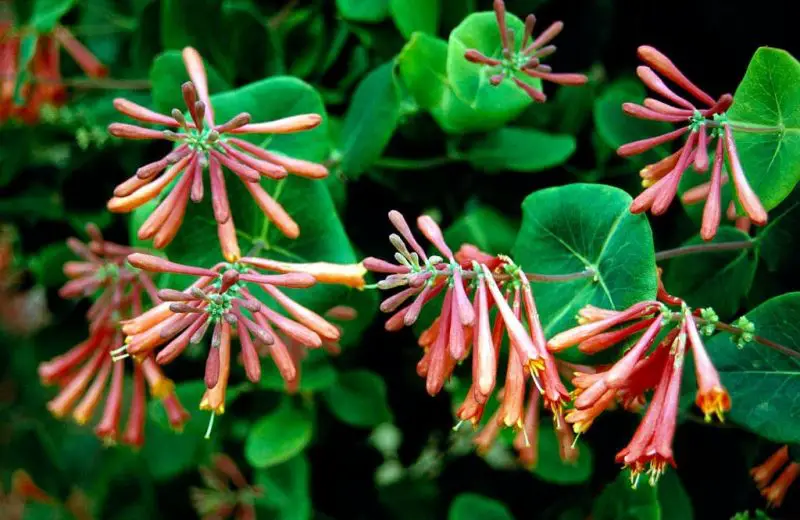
Perfoliate Honeysuckle (Lonicera sempervirens ‘Perfoliata’) is a unique cultivar of the trumpet honeysuckle distinguished by its unusual leaf arrangement, where pairs of leaves are fused at the base, creating a “perforated” appearance around the stem. Its flowers are long, tubular, and typically coral-red with golden throats, blooming in clusters from late spring through summer. The foliage remains semi-evergreen in mild climates, offering year-round garden interest.
This variety performs best in USDA hardiness zones 4 through 9 and prefers full sun to partial shade with well-drained soil. It is a twining vine that can reach up to 15 feet in height when provided with support like trellises or fences. Once established, it is moderately drought-tolerant but benefits from consistent watering and mulching. Pruning in late winter encourages new growth and more prolific blooming in the growing season.
Perfoliate Honeysuckle is especially prized for its ability to attract hummingbirds, thanks to its tubular flowers rich in nectar. It makes an eye-catching focal point in wildlife gardens, cottage borders, or urban settings where vertical color is desired. The distinctive foliage also adds structural interest, making it both a functional and ornamental addition to diverse garden designs.
Trumpet Honeysuckle
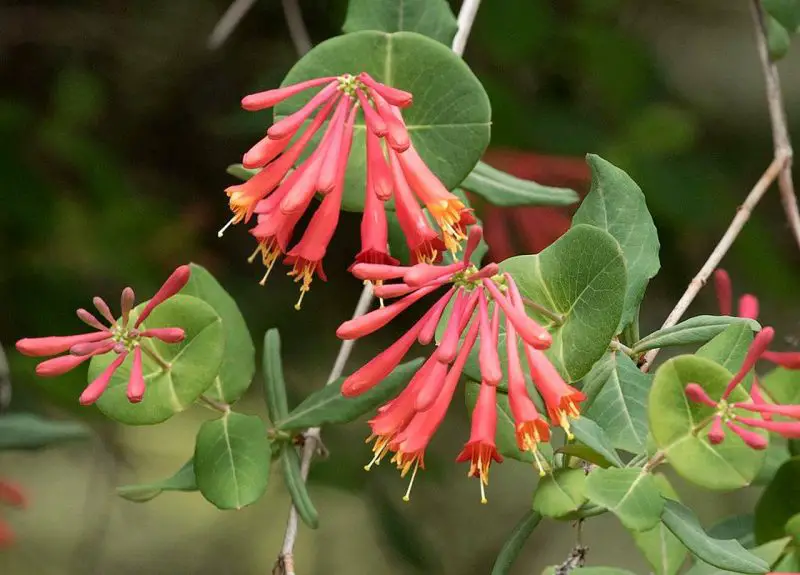
Trumpet Honeysuckle (Lonicera sempervirens) is a native North American vine known for its brilliant red to orange trumpet-shaped flowers that bloom profusely from spring into summer, with sporadic reblooming into fall. The foliage is bluish-green and slightly leathery, creating a beautiful contrast against the vibrant blooms. This plant is not only decorative but also non-invasive, making it a favorite among native plant gardeners.
It grows well in USDA zones 4 through 9 and thrives in full sun to partial shade. Well-drained, slightly acidic soil encourages the best growth and flower production. The vine can climb up to 20 feet and should be supported with a trellis, arbor, or fence. Trumpet Honeysuckle is low-maintenance, needing only occasional watering once established, and pruning after flowering to control its shape.
This honeysuckle is especially valued for attracting hummingbirds, butterflies, and native pollinators. It is an excellent choice for naturalized landscapes, wildlife-friendly spaces, and erosion control on slopes. Its long blooming period, brilliant colors, and resistance to pests make it a dependable and eye-catching plant in many garden settings.
Heaven Scent Honeysuckle
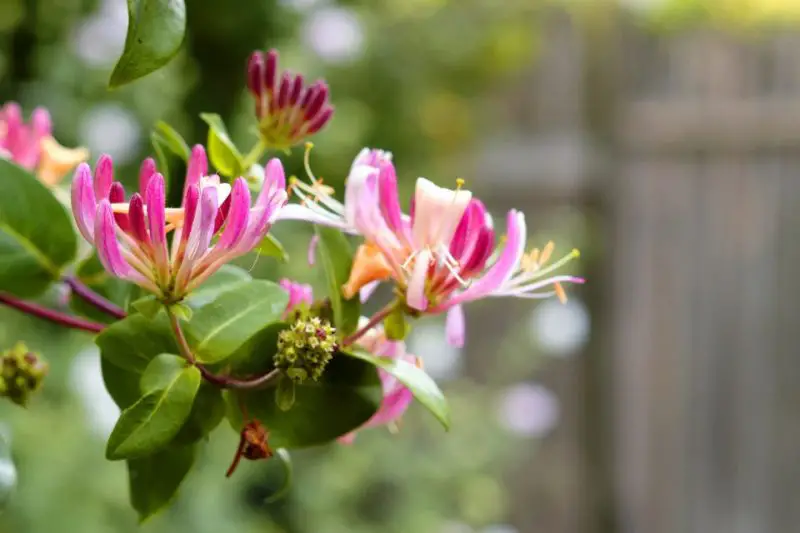
Heaven Scent Honeysuckle (Lonicera periclymenum ‘Heaven Scent’) is a deciduous vine loved for its highly fragrant, creamy pink and yellow flowers that open in midsummer and continue into early fall. Its blooms are particularly aromatic in the evening, making it a delightful addition near patios or walkways. The green foliage provides a dense backdrop, and red berries may follow the flowers, adding seasonal interest.
This variety is ideal for USDA zones 5 through 9 and grows best in full sun or partial shade. It prefers moist but well-drained soil and benefits from regular watering, especially during dry spells. Reaching heights of up to 15 feet, it twines naturally and can be guided up trellises, pergolas, or fences. Pruning should be done after flowering to shape and encourage robust blooming for the next season.
Heaven Scent Honeysuckle is often planted for its romantic fragrance and beautiful floral display. It draws bees, butterflies, and other pollinators while providing vertical interest in small garden spaces. Whether grown as a privacy screen or a fragrant accent, it enhances both sensory and visual experiences in the landscape.
Morrow’s Honeysuckle
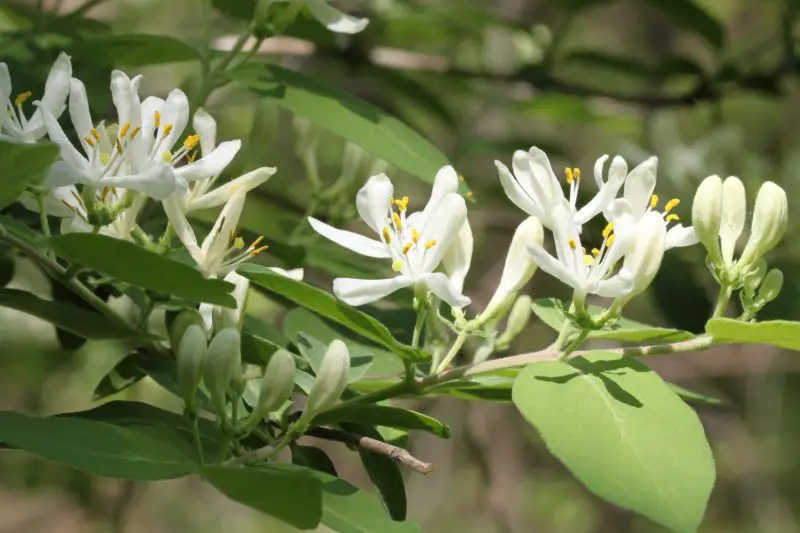
Morrow’s Honeysuckle (Lonicera morrowii) is a deciduous shrub native to eastern Asia, often recognized by its dense, arching branches and soft, gray-green leaves. In spring, it produces small white flowers that age to yellow, creating a subtle two-toned effect. These flowers are mildly fragrant and typically bloom from mid to late spring, followed by bright red berries in early summer that persist into fall.
Best grown in USDA zones 3 through 8, this honeysuckle adapts to a wide range of soil types and light conditions but flourishes in full sun to partial shade with well-drained soil. It grows quickly, reaching 6 to 10 feet in height and width, and may require annual pruning to maintain its form. Although tolerant of urban pollution and drought, it’s considered invasive in parts of North America due to its ability to spread rapidly and outcompete native plants.
Despite its invasive potential, Morrow’s Honeysuckle is still occasionally planted for erosion control, wildlife habitat, and use in informal hedges. Its berries provide food for birds, and its dense structure offers nesting sites. However, due to its ecological impact, gardeners are encouraged to opt for native alternatives when possible.
Budapest Honeysuckle
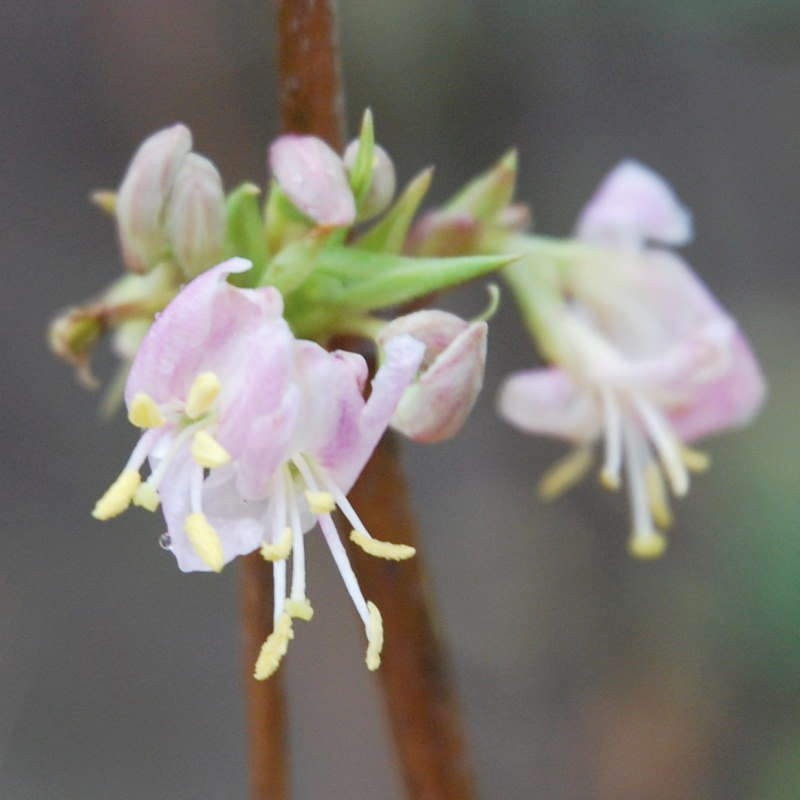
Budapest Honeysuckle (Lonicera xylosteum ‘Budapest’) is a compact, deciduous shrub cultivar of the fly honeysuckle, recognized for its neat form and subtle charm. It produces creamy-white flowers in mid to late spring, which are followed by bright red berries that are visually striking, though mildly toxic to humans. The leaves are small, soft, and oval-shaped, offering a delicate texture throughout the growing season.
This honeysuckle thrives in USDA zones 4 through 8 and adapts well to a variety of soil types, provided they are well-drained. It prefers full sun to partial shade and generally grows 3 to 5 feet tall with a similar spread, making it suitable for foundation plantings or low hedges. Minimal pruning is needed to maintain its shape, usually done in late winter or early spring.
Budapest Honeysuckle is appreciated for its tidy habit and ability to fit well into formal and informal gardens. Its flowers attract early-season pollinators, while birds are drawn to the berries in summer. Although not as flamboyant as climbing varieties, its understated beauty and ease of care make it a solid choice for smaller landscapes or mixed shrub borders.
Honey Baby Honeysuckle
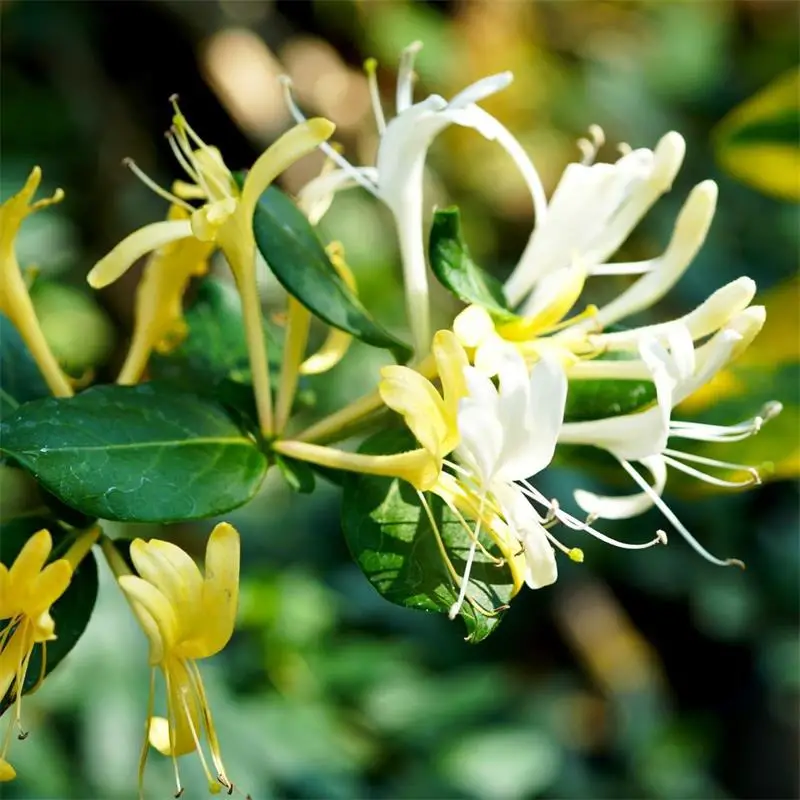
Honey Baby Honeysuckle (Lonicera ‘Honey Baby’) is a compact, bushy honeysuckle prized for its sweet fragrance and generous bloom production. This hybrid features clusters of orange-pink to golden-yellow flowers that bloom from late spring through summer and are especially fragrant in the evening. Its foliage is bright green and semi-evergreen in warmer climates, adding a lush appearance to garden beds.
Suitable for USDA zones 6 through 9, Honey Baby prefers full sun to light shade and well-drained, fertile soil. It typically grows 2 to 3 feet tall and wide, making it an excellent option for containers, borders, or small garden spaces. Light pruning after flowering will help maintain its form and encourage continued blooming. It is also moderately drought-tolerant once established.
This cultivar is perfect for gardeners who want the beauty and scent of honeysuckle without the sprawling nature of vining types. Its compact habit makes it ideal for patios, balconies, or areas where space is limited. Pollinators such as bees and hummingbirds are highly attracted to its blossoms, making it both a decorative and ecologically beneficial choice.
Chaparral Honeysuckle
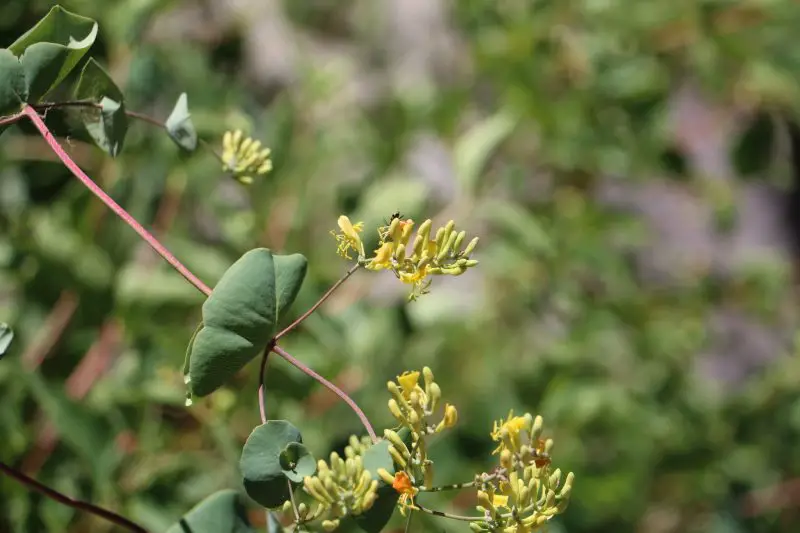
Chaparral Honeysuckle (Lonicera interrupta) is a native Californian species found in dry slopes and chaparral habitats. It is a deciduous to semi-evergreen shrub or vine with pale green leaves and striking yellow to orange tubular flowers that bloom from late spring through early summer. These flowers are loosely arranged in whorls and provide a bold contrast against the soft foliage, drawing attention in native and drought-tolerant gardens.
Hardy in USDA zones 7 through 10, this honeysuckle thrives in full sun and well-drained, rocky or sandy soils. It typically grows 4 to 6 feet tall but can climb with support, making it versatile as a shrub or sprawling vine. Once established, it is highly drought-tolerant and requires minimal watering, though occasional deep watering in dry months promotes better flowering. Pruning can be done in winter to maintain shape and encourage healthy regrowth.
Chaparral Honeysuckle is an important wildlife plant in its native range, attracting hummingbirds, bees, and butterflies with its nectar-rich blossoms. It is also deer-resistant and can be used in habitat restoration projects or dry hillside plantings. Its adaptability to arid environments makes it an excellent choice for xeriscaping and firewise landscaping.
Bearberry Honeysuckle
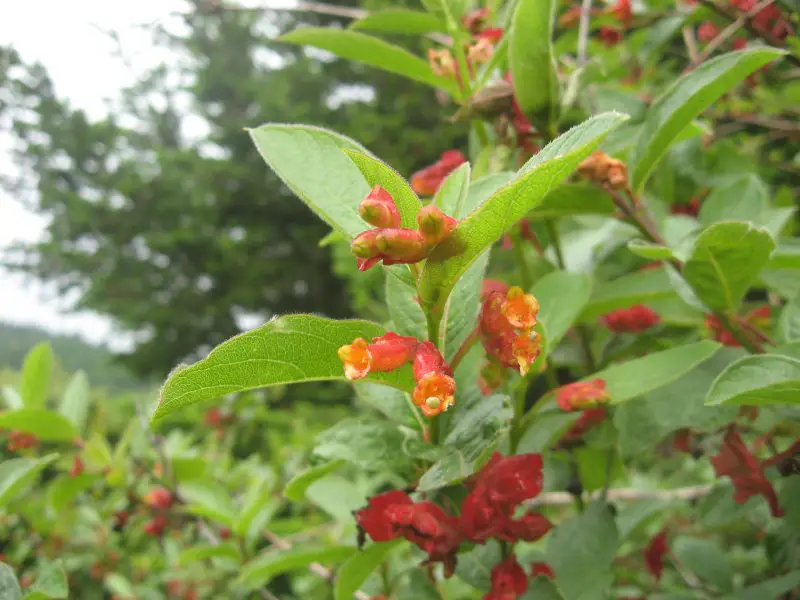
Bearberry Honeysuckle (Lonicera involucrata), also known as twinberry honeysuckle, is a native North American shrub prized for its unique paired yellow flowers and glossy dark green leaves. The blooms appear in late spring to early summer and are often followed by shiny black berries surrounded by red bracts, which give the plant ornamental appeal through summer and fall. The flowers are tube-shaped and attract a variety of pollinators.
This shrub performs well in USDA zones 5 through 9 and prefers moist, well-drained soil with full sun to partial shade. It grows 6 to 8 feet tall and wide, thriving near streams, wetlands, and shaded woodland gardens. While tolerant of drier conditions once mature, it grows best with regular watering. Prune in late winter or early spring to remove dead wood and shape the plant.
Bearberry Honeysuckle plays a valuable ecological role, attracting hummingbirds, bees, and butterflies while its berries provide food for birds and small mammals. It is used in restoration projects and native plant gardens to stabilize soil and support biodiversity. Though the berries are not edible for humans, their dramatic appearance adds visual interest in naturalized landscapes.
Japanese Honeysuckle
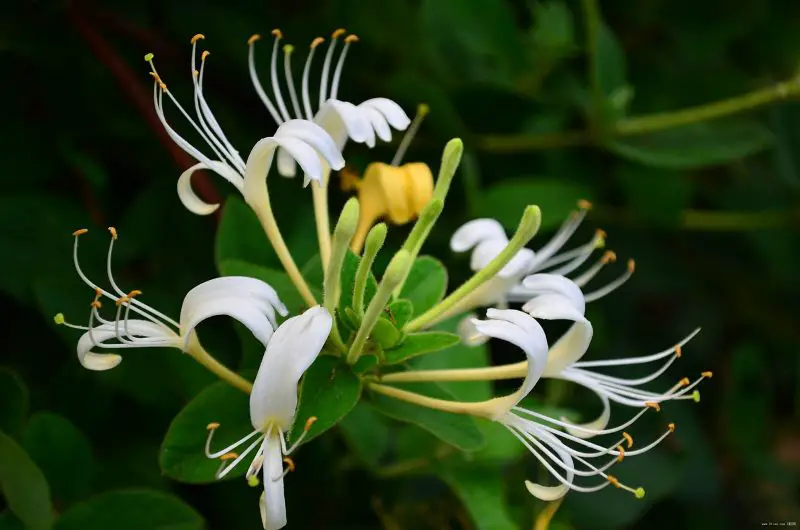
Japanese Honeysuckle (Lonicera japonica) is a vigorous, twining vine known for its sweetly fragrant, white-to-yellow flowers that bloom from late spring through early fall. The flowers are tubular and often appear in pairs, exuding a strong perfume that intensifies at dusk. Its foliage is dark green and semi-evergreen in warmer climates, creating a dense and attractive covering over fences or ground.
It thrives in USDA zones 4 through 10 and grows in a variety of soil types, though it prefers moist, well-drained conditions with full sun to partial shade. Japanese Honeysuckle can reach over 30 feet in length and requires regular pruning to prevent it from overwhelming nearby plants or structures. Due to its aggressive growth, it is considered invasive in many parts of the United States and should be planted with caution.
Despite its invasive nature, it remains popular in gardens for its fragrance, long bloom season, and ability to attract pollinators. In controlled environments or containers, it can be trained along trellises or arbors. Gardeners interested in a safer alternative may opt for native trumpet honeysuckle or other non-invasive varieties with similar floral appeal.
Blueleaf Honeysuckle
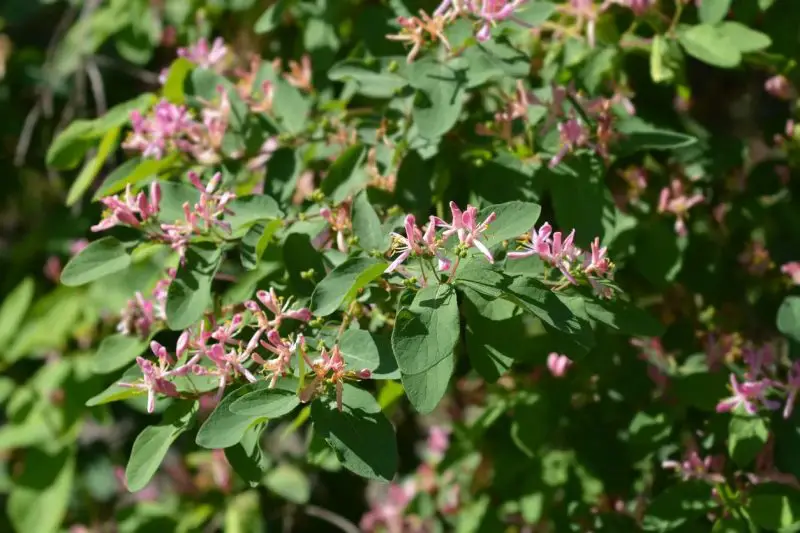
Blueleaf Honeysuckle (Lonicera korolkowii) is a graceful deciduous shrub known for its bluish-gray foliage and showy pink to lavender tubular flowers that bloom in mid to late spring. The narrow leaves have a slight silvery sheen, giving the plant a soft and elegant appearance even when not in bloom. After flowering, it produces small red berries that attract birds and add late-season interest.
This honeysuckle thrives in USDA zones 4 through 8 and prefers full sun to partial shade. It grows 6 to 10 feet tall and wide, with an upright and arching habit. Blueleaf Honeysuckle adapts well to poor or alkaline soils and is drought-tolerant once established, making it ideal for low-maintenance shrub borders or mixed plantings. Pruning can be done after flowering to shape and manage its size.
Blueleaf Honeysuckle is valued for its ornamental foliage, delicate blooms, and suitability in dry, sunny locations. It attracts bees and butterflies during the flowering season and provides nesting cover for small birds. Its refined look and adaptability make it a favorite for naturalistic landscapes and xeric gardens.
Fragrant Honeysuckle
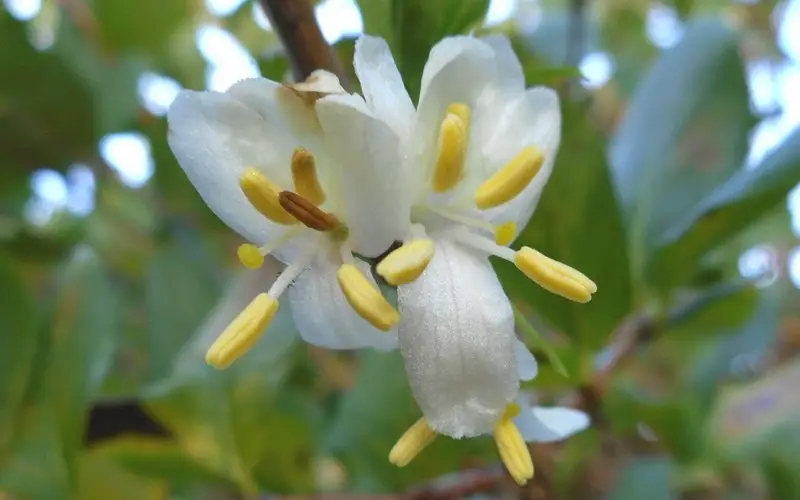
Fragrant Honeysuckle (Lonicera fragrantissima), also called Winter Honeysuckle, is a deciduous to semi-evergreen shrub noted for its intensely fragrant, creamy-white flowers that bloom in late winter to early spring. The blossoms emerge on bare stems before the leaves, filling the air with a sweet citrus-like scent even on cold days. Its leaves are broad, dark green, and arrive after flowering.
Hardy in USDA zones 4 through 8, this shrub grows best in full sun to partial shade and moderately fertile, well-drained soil. It typically reaches 6 to 10 feet tall and wide, forming a rounded, loosely branched shrub. It requires minimal maintenance but can be pruned after flowering to control shape and encourage bushiness. Once established, it is drought-tolerant and withstands urban conditions.
Fragrant Honeysuckle is a garden favorite for early-season interest, especially near entrances, patios, or windows where its scent can be enjoyed. It attracts bees emerging in early spring and provides structural beauty during the colder months. This honeysuckle also works well in mixed borders, as a specimen plant, or in informal hedges.
Amur Honeysuckle
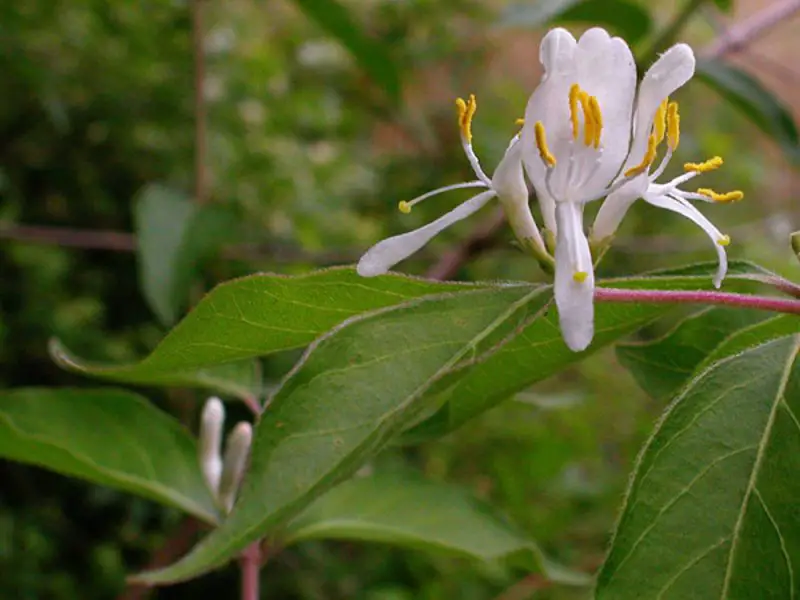
Amur Honeysuckle (Lonicera maackii) is a fast-growing, deciduous shrub native to Asia, notable for its arching branches and vigorous growth habit. It produces abundant pairs of white tubular flowers that turn yellow with age, typically blooming in mid to late spring. Its bright red berries appear in summer and are readily eaten by birds, although they do not provide significant nutritional value. The leaves are opposite, ovate, and bright green, creating a dense canopy.
This honeysuckle is hardy in USDA zones 3 through 8 and can grow in a wide range of soil types, from clay to loam. It tolerates both sun and partial shade but grows more aggressively in full sunlight. Amur Honeysuckle can reach heights of 15 to 20 feet and is often used in hedgerows or as a screening plant. However, it requires regular pruning to manage its size, and in many areas, it is considered an invasive species due to its ability to outcompete native vegetation.
Despite its showy flowers and adaptability, Amur Honeysuckle is often discouraged in ecological landscapes because it disrupts natural plant communities. Its berries, while attractive, encourage seed dispersal by birds, contributing to its spread. Gardeners are encouraged to consider native alternatives such as Spicebush or native viburnums for similar form and wildlife benefits.
Scentsation Honeysuckle
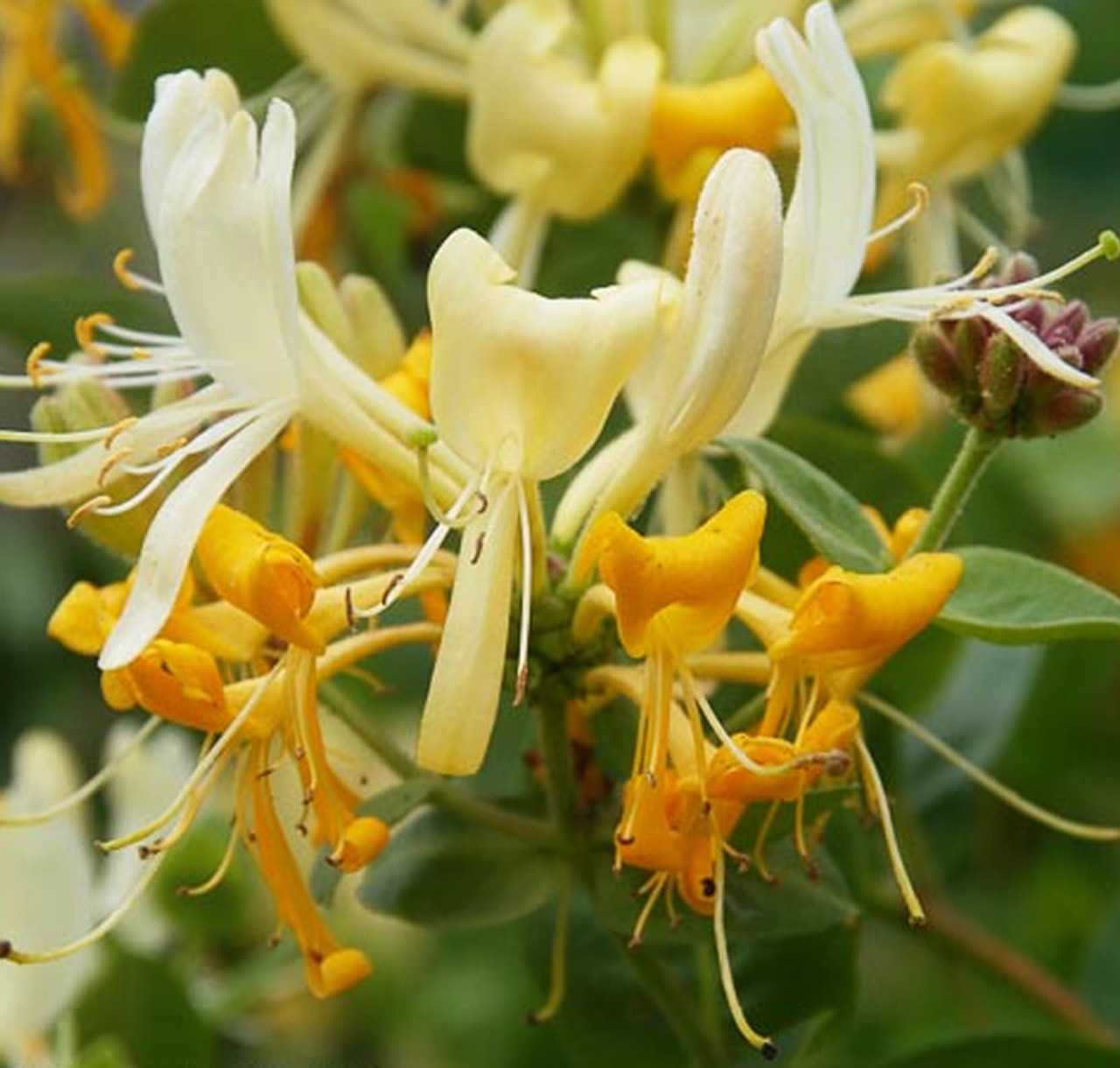
Scentsation Honeysuckle (Lonicera periclymenum ‘Scentsation’) is a standout climbing honeysuckle cultivar known for its extended blooming season and strong, sweet fragrance. From late spring through early fall, it produces an abundance of yellow flowers with creamy-white interiors that mature into bright red berries. The fragrance is strongest in the evening, making it ideal for planting near patios or entryways where its scent can be fully appreciated.
Hardy in USDA zones 4 through 9, this honeysuckle thrives in full sun to partial shade and prefers moist, well-drained soil. It can grow 8 to 10 feet tall when supported on a trellis, arbor, or fence. To maintain vigorous growth and continuous blooming, regular watering and an annual pruning after flowering are recommended. Mulching around the base helps retain soil moisture and regulate temperature.
Scentsation Honeysuckle is beloved for its ornamental value and wildlife appeal. The flowers attract bees, butterflies, and hummingbirds, while the berries provide food for birds in late summer. Its long blooming period and pleasant aroma make it one of the most desirable varieties for gardeners looking to combine beauty, fragrance, and ecological function in a single plant.
Common Honeysuckle
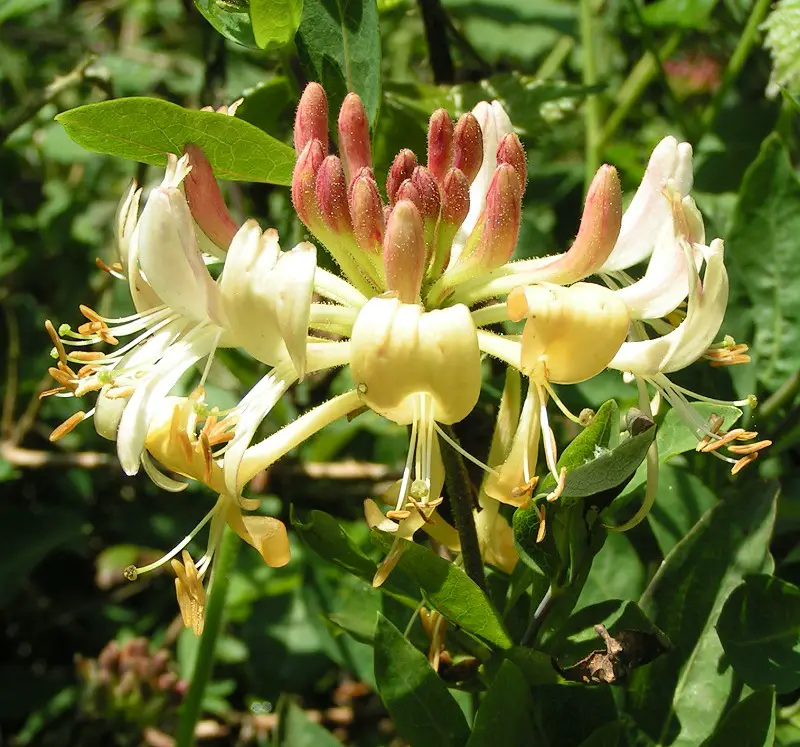
Common Honeysuckle (Lonicera periclymenum) is a European native climbing vine valued for its richly fragrant, tubular flowers that range in color from cream and yellow to deep pink and red. It blooms from late spring into early autumn, especially in cooler climates where flowering is extended. The leaves are oval and slightly downy, and berries that follow the flowers turn red and are attractive to birds.
This species is hardy in USDA zones 4 through 9 and thrives in well-drained soil with full sun to partial shade. It can reach heights of 15 to 20 feet with support and is often used to cover trellises, fences, or pergolas. Common Honeysuckle benefits from annual pruning to remove old wood and encourage new flowering shoots, typically done in late winter or early spring.
A favorite in cottage gardens and woodland edges, Common Honeysuckle is loved for its sweet scent and ability to draw in pollinators such as bees, moths, and hummingbirds. It provides excellent habitat for nesting birds and adds charm to both formal and informal garden designs. Its long history in European gardens has made it a classic choice for fragrant vertical accents.
Mexican Honeysuckle
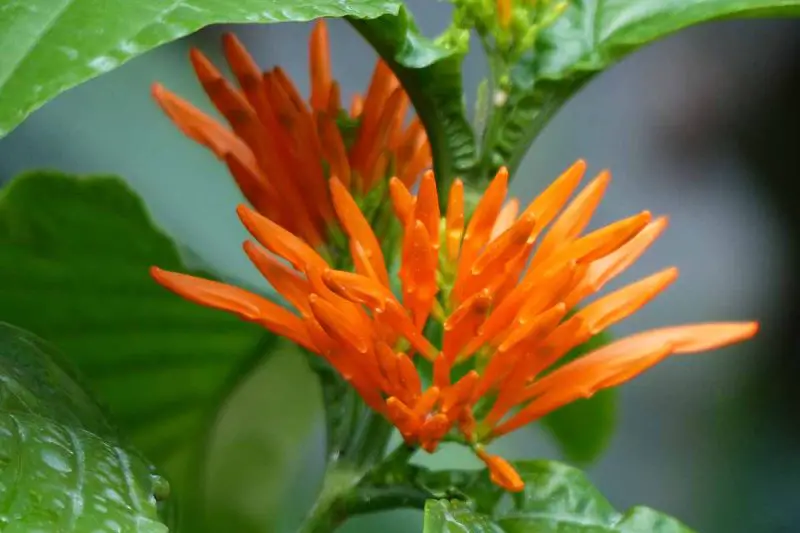
Mexican Honeysuckle (Justicia spicigera) is not a true honeysuckle but is often included among them due to its similar growth habit and floral appearance. Native to Mexico and Central America, it is a low-maintenance, evergreen shrub that produces bright orange tubular flowers throughout much of the year, especially in warm climates. The soft, velvety green leaves contrast beautifully with its vibrant blooms.
This species is suited to USDA zones 8 through 11 and thrives in full sun to light shade. It prefers well-drained soil and is drought-tolerant once established, though it will bloom more abundantly with occasional watering. Mexican Honeysuckle typically grows 3 to 5 feet tall and wide, making it ideal for borders, foundation plantings, or pollinator gardens. Light pruning can help maintain a compact shape and encourage continued blooming.
Mexican Honeysuckle is popular in tropical and desert landscapes due to its heat tolerance and long blooming season. It attracts hummingbirds and butterflies, making it a valuable addition to wildlife-friendly gardens. Its adaptability, low water needs, and cheerful color make it an excellent choice for xeriscaping and low-maintenance ornamental beds.
Pink Tatarian Honeysuckle
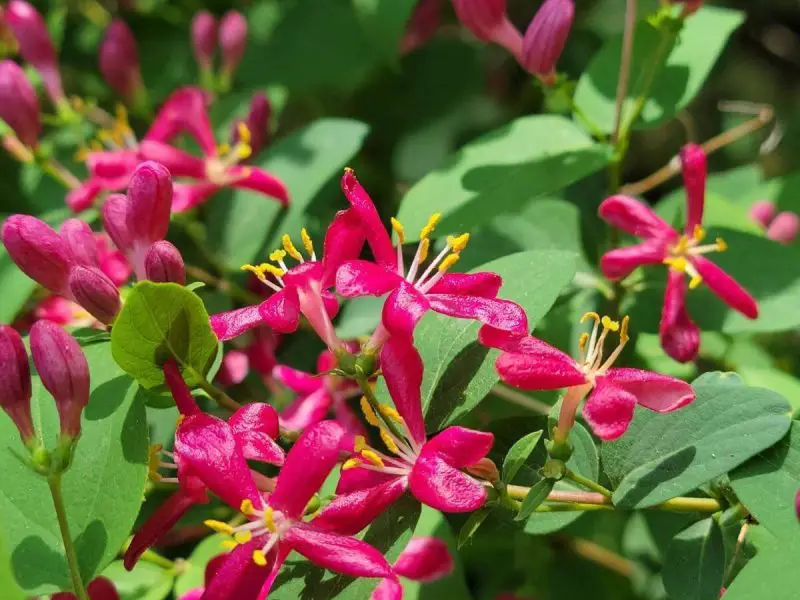
Pink Tatarian Honeysuckle (Lonicera tatarica ‘Pink’) is a fast-growing deciduous shrub known for its delicate pink flowers that appear in late spring to early summer. These trumpet-shaped blossoms are mildly fragrant and followed by small red berries in mid to late summer. The foliage is pale green and forms a dense thicket of upright stems, making the plant effective as a screening shrub or informal hedge.
Hardy in USDA zones 3 through 8, this honeysuckle tolerates a wide range of conditions, including poor soil, urban pollution, and drought once established. It grows 8 to 12 feet tall and wide, often requiring annual pruning to remove dead wood and manage its vigorous growth. It thrives in full sun to partial shade and does best with good air circulation to prevent mildew.
Though admired for its ornamental flowers and ease of care, Pink Tatarian Honeysuckle is considered invasive in some regions due to its rapid spread and tendency to outcompete native plants. It attracts birds and early-season pollinators, but gardeners are advised to check with local authorities before planting to ensure it is suitable for their region.
Translucent Honeysuckle
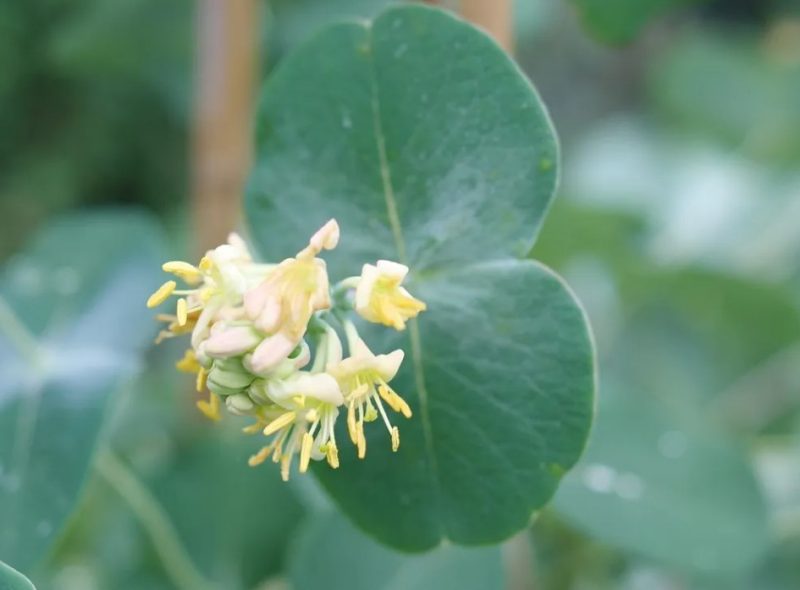
Translucent Honeysuckle (Lonicera reticulata ‘Kintzley’s Ghost’), often referred to by its cultivar name Kintzley’s Ghost, is a striking and unusual variety known for its silver-blue bracts that form behind small yellow flowers. The blooms appear in late spring to early summer, but the metallic-looking bracts persist long after flowering, giving the plant an ethereal, ghostly appearance. Its foliage is blue-green, contrasting nicely with the shimmering bracts that resemble dried eucalyptus.
This cultivar is hardy in USDA zones 4 through 8 and prefers full sun to partial shade with well-drained soil. It is a twining vine that can grow up to 10 to 15 feet tall, ideal for climbing trellises, arbors, or fences. It is relatively drought-tolerant once established and requires minimal care beyond annual pruning to remove dead growth and encourage flowering.
Translucent Honeysuckle is favored not only for its ornamental flowers but also for the long-lasting decorative bracts that extend visual interest through summer and fall. Though lightly fragrant, its primary appeal lies in its unusual appearance. It also attracts bees and hummingbirds and works beautifully in mixed perennial borders or against dark backgrounds where its silvery hues can stand out.
Major Wheeler Honeysuckle
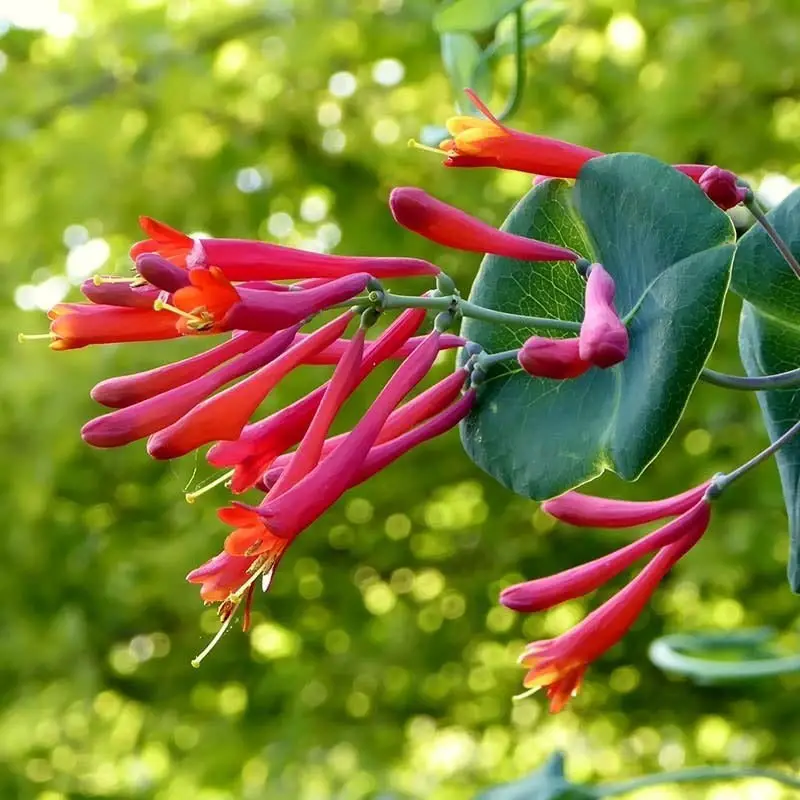
Major Wheeler Honeysuckle (Lonicera sempervirens ‘Major Wheeler’) is a vigorous native honeysuckle vine known for its profusion of bright red tubular flowers that appear from late spring through fall. The blooms are highly attractive to hummingbirds and butterflies and grow in clusters against a backdrop of dark green to bluish-green semi-evergreen foliage. It is one of the longest-blooming varieties in the Lonicera sempervirens group.
This honeysuckle is ideal for USDA zones 4 through 9 and thrives in full sun to partial shade. It prefers average, well-drained soil and can grow 6 to 10 feet tall with support. Regular watering during dry spells and pruning after flowering help maintain its shape and vigor. Mulching can also protect roots and conserve moisture during hot summers.
Major Wheeler is celebrated for being disease-resistant, non-invasive, and incredibly reliable in performance. Its extended flowering season and strong appeal to pollinators make it a favorite for wildlife gardens, trellises, and vertical structures. Unlike the aggressive Japanese honeysuckle, this cultivar offers a safe and sustainable way to enjoy vibrant color and native beauty in the landscape.
Mandarin Honeysuckle
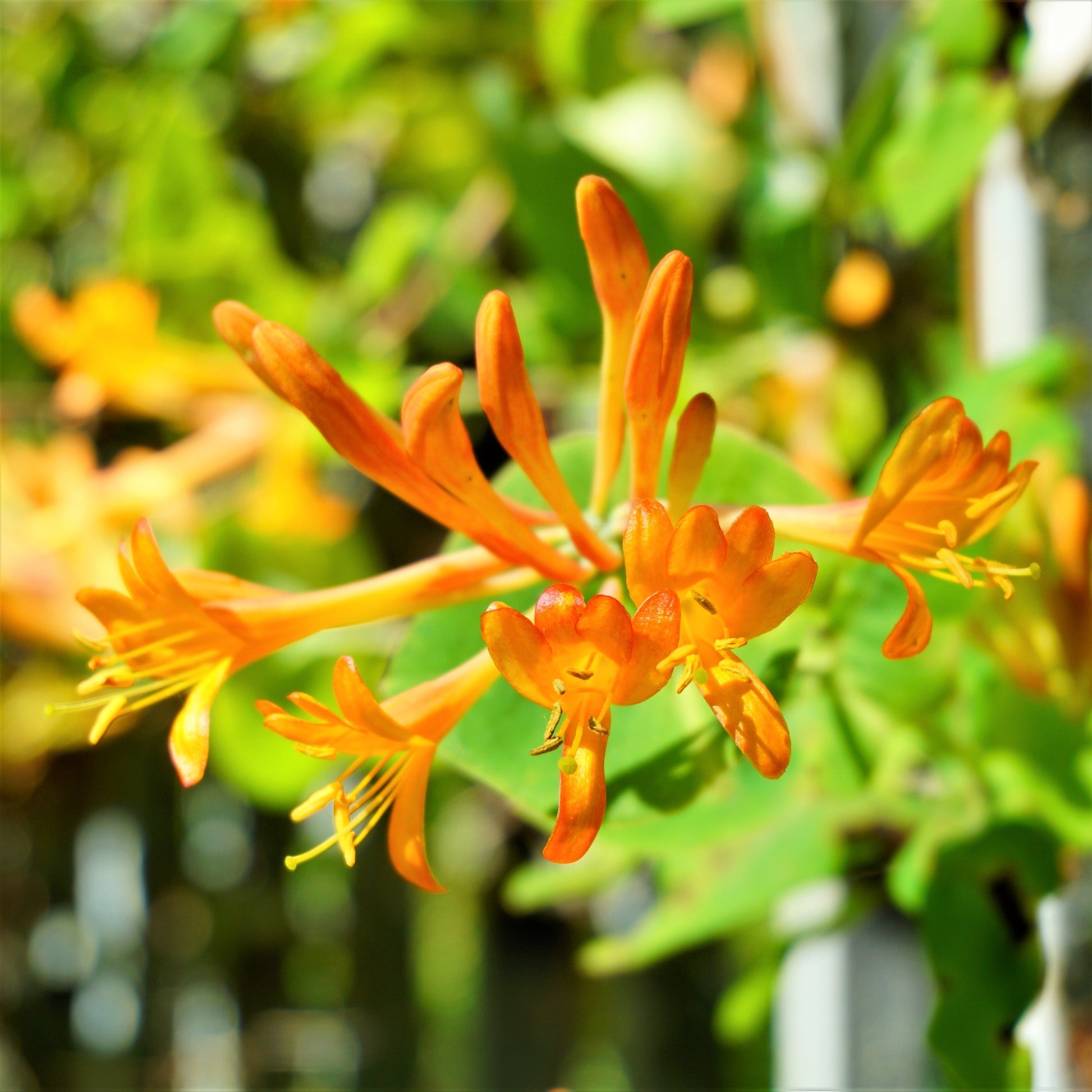
Mandarin Honeysuckle (Lonicera × brownii ‘Mandarin’) is a hybrid honeysuckle vine recognized for its fiery, orange-red tubular flowers that bloom in abundance from early summer through fall. The blooms are rich in nectar and especially attractive to hummingbirds. Its bright green leaves are oval and oppositely arranged along twining stems, creating a lush background for the vivid blooms.
This variety is well-suited for USDA zones 4 through 9 and flourishes in full sun with moist, well-drained soil. It can grow 10 to 15 feet tall when supported and should be pruned in early spring to control size and encourage flowering. It tolerates heat and humidity and is moderately drought-resistant once mature, making it easy to grow in a range of garden environments.
Mandarin Honeysuckle is prized for its vibrant, tropical color palette and long blooming period. It performs well in pollinator gardens, along fences, or over garden structures like pergolas. Its flowers do not produce strong fragrance, but the bold color makes it a standout addition to any landscape focused on attracting hummingbirds and visual interest.
Lonicera sempervirens ‘John Clayton’
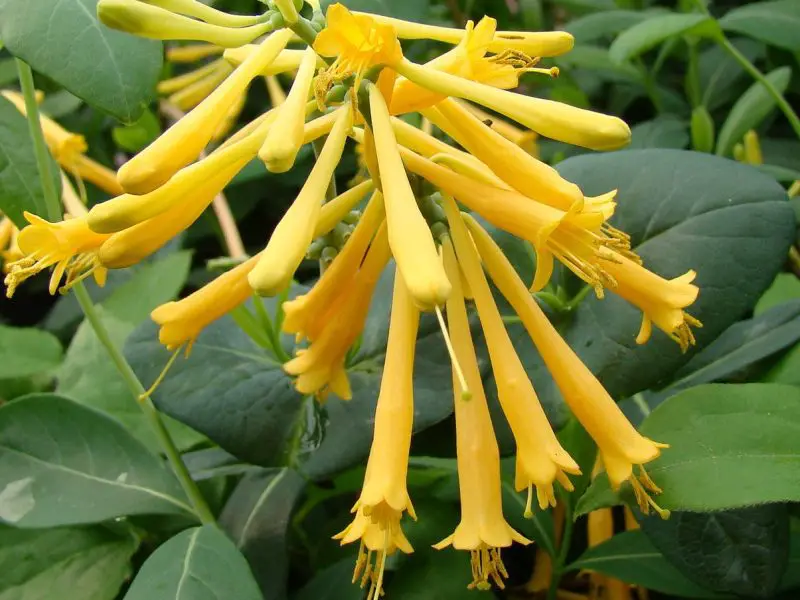
Lonicera sempervirens ‘John Clayton’ is a native cultivar of trumpet honeysuckle that features soft yellow, tubular flowers blooming from late spring to fall. It has a more restrained growth habit than other varieties, making it easier to manage in small gardens. The leaves are blue-green and semi-evergreen in warmer climates, adding subtle beauty even when not in bloom.
This honeysuckle grows well in USDA zones 4 through 9 and prefers full sun for best flowering, though it can tolerate partial shade. It thrives in well-drained soil and can grow 6 to 10 feet tall with proper support. Pruning should be done after the first flush of flowers to encourage reblooming and to maintain a tidy shape.
‘John Clayton’ is a top choice for gardeners looking for a native, non-invasive honeysuckle that still offers ornamental value and pollinator support. Its soft yellow blooms are highly attractive to hummingbirds, and the plant blends beautifully into naturalistic and cottage garden settings. It also works well on trellises, fences, and mailboxes where its delicate color can shine.
Lonicera ciliosa (Orange Honeysuckle)
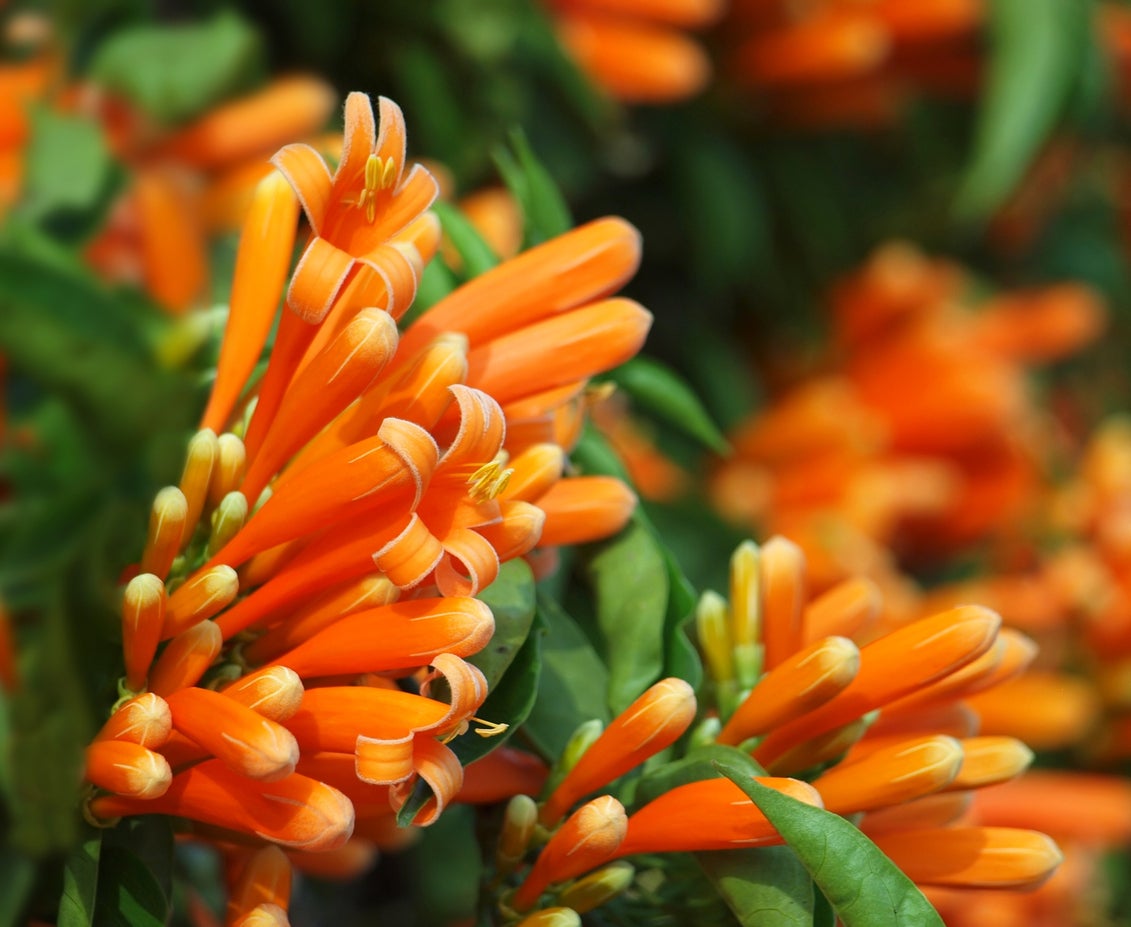
Lonicera ciliosa, commonly known as Orange Honeysuckle, is a native species to the western United States, prized for its bright orange, tubular flowers that bloom in late spring through mid-summer. The flowers appear in loose clusters at the end of stems and are particularly attractive to hummingbirds and bumblebees. The plant’s blue-green leaves are broad and may appear fused around the stem at their base.
Hardy in USDA zones 5 through 9, Orange Honeysuckle prefers moist, well-drained soil in partial shade to full sun. It can reach 10 to 20 feet in length and uses twining stems to climb nearby structures or shrubs. This honeysuckle does best with consistent watering in dry regions, and pruning can be done after flowering to shape and manage size.
Lonicera ciliosa is an excellent native choice for woodland edges, wildlife gardens, and riparian zones. It supports local ecosystems while offering a beautiful display of color. Unlike more aggressive exotic honeysuckles, it integrates well with native plants and can help restore natural habitats without spreading uncontrollably.
Lonicera oblongifolia (Swamp Fly Honeysuckle)
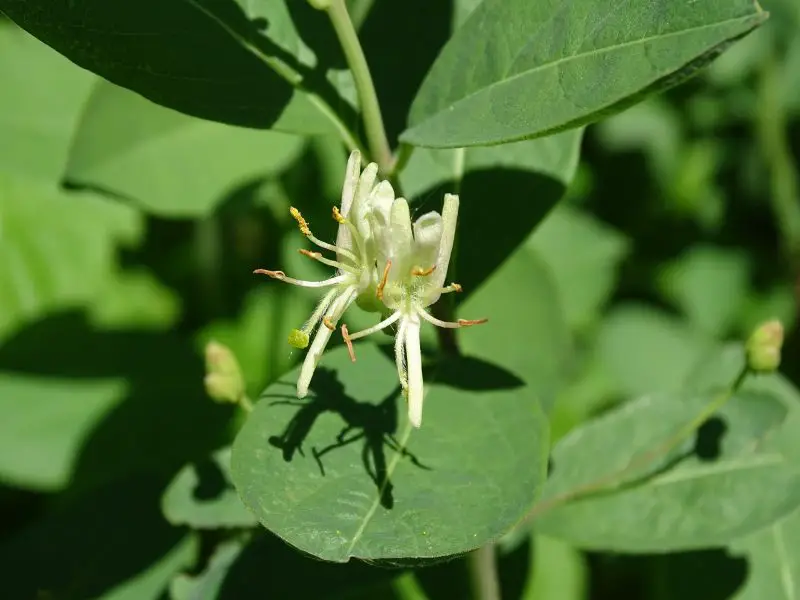
Lonicera oblongifolia, commonly known as Swamp Fly Honeysuckle, is a deciduous shrub native to wetlands and moist woodlands in the northern United States and parts of Canada. It features opposite, oblong leaves and produces pairs of pale yellow to cream-colored tubular flowers in late spring. These modest, lightly fragrant blooms are followed by dull red berries that ripen in summer, attracting birds and small mammals.
This honeysuckle is well-suited to USDA zones 2 through 6 and thrives in cool, moist environments with partial shade. It typically grows 3 to 5 feet tall and spreads gently in suitable conditions. The plant prefers acidic, humus-rich soils and is ideal for rain gardens, woodland understories, and riparian zones. It is low-maintenance and benefits from occasional pruning to remove dead wood or shape its form.
Swamp Fly Honeysuckle plays a valuable ecological role in native plant communities, offering early nectar for pollinators and food for wildlife. Its ability to grow in damp, shaded conditions makes it useful in habitat restoration projects and naturalized garden settings. Though not showy, it supports biodiversity and adds quiet charm to shaded landscapes.
Lonicera canadensis (Canadian Fly Honeysuckle)
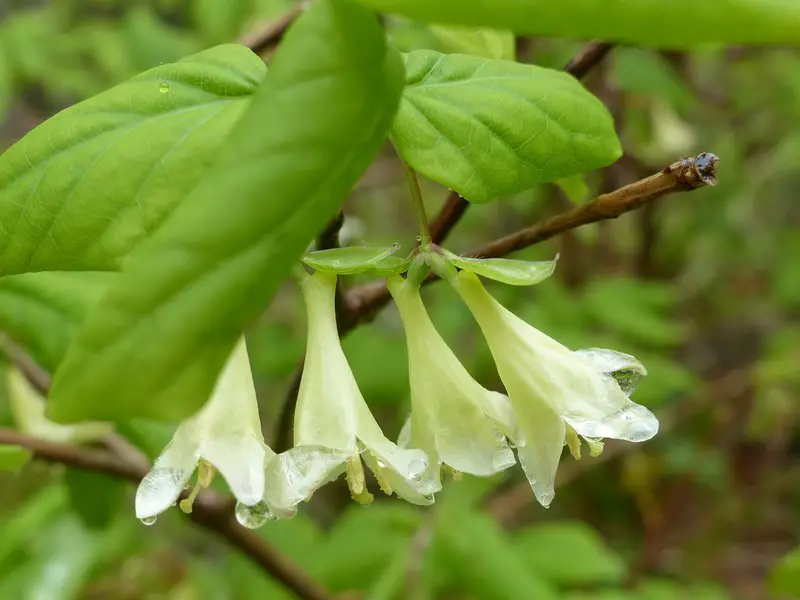
Lonicera canadensis, or Canadian Fly Honeysuckle, is a delicate, native shrub found in cool forests and moist slopes across the northeastern United States and Canada. It produces small, paired pale yellow flowers in spring, often hidden beneath soft green leaves. These flowers give way to red berries by mid-summer, usually in fused pairs, which are quickly eaten by birds.
Hardy in USDA zones 2 through 6, Canadian Fly Honeysuckle grows best in cool, moist, shady conditions with well-drained soil. It typically reaches 3 to 6 feet in height and has an open, arching growth habit. It requires minimal care and thrives in woodland gardens, naturalistic landscapes, or understory plantings. Mulching helps retain moisture and keep the roots cool.
This native species is ideal for restoring forest edges and creating bird-friendly environments. Its early-season blooms offer a nectar source for pollinators, while the berries support local fauna. Canadian Fly Honeysuckle blends well with ferns, native wildflowers, and shade-loving shrubs in quiet, forest-like settings.
Lonicera hispidula (California Honeysuckle / Pink Honeysuckle)
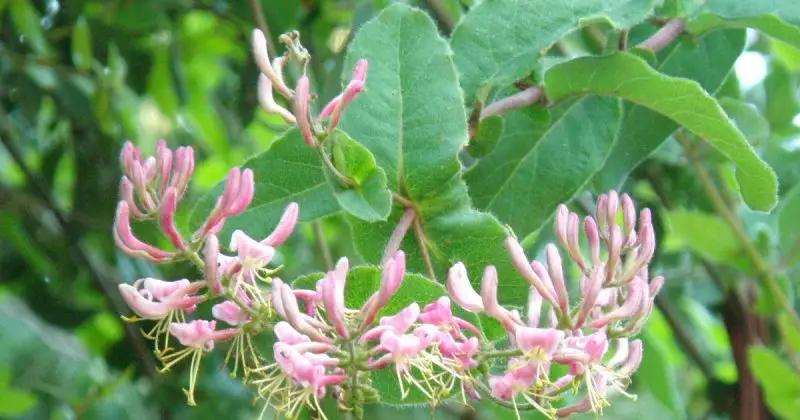
Lonicera hispidula, commonly known as California Honeysuckle or Pink Honeysuckle, is a western North American native valued for its pink to rose-colored, tubular flowers that bloom from late spring into summer. The flowers grow in dense clusters and are especially attractive to hummingbirds and native bees. Its leaves are bluish-green, and the stems are often lightly hairy, giving the plant a slightly fuzzy appearance.
This honeysuckle is hardy in USDA zones 7 through 10 and prefers well-drained soil in full sun to light shade. It is a twining climber that can grow up to 20 feet long with support or be used as a sprawling groundcover. It is drought-tolerant once established, making it a smart choice for California gardens, coastal landscapes, and dry woodland areas. Pruning can be done in winter to shape and control growth.
California Honeysuckle is a wonderful native alternative to invasive varieties, providing both ornamental beauty and wildlife support. It is often used in habitat gardens, native plantings, and erosion control projects. Its graceful habit and pink blooms add a splash of color to arid, Mediterranean-style, or naturalistic gardens.
Lonicera utahensis (Twinberry Honeysuckle)
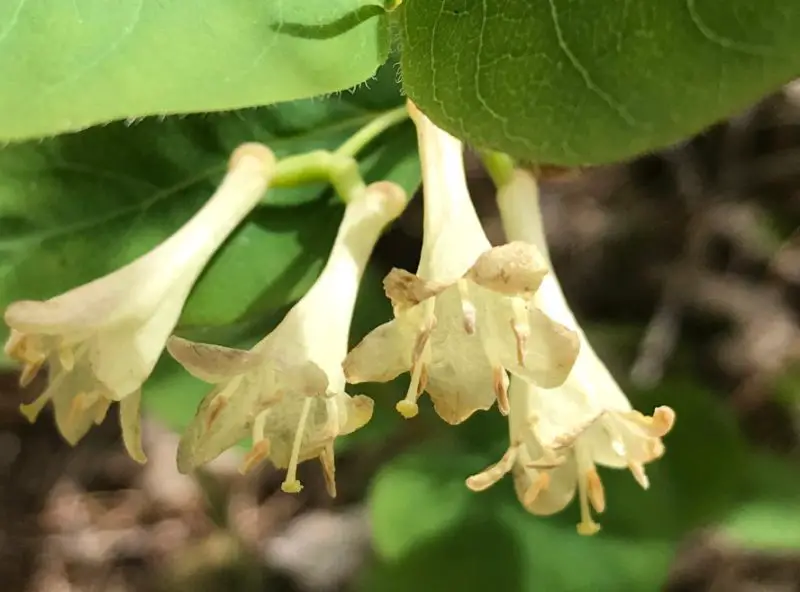
Lonicera utahensis, commonly known as Twinberry Honeysuckle, is a native shrub found in moist, high-elevation forests of the western United States. It produces creamy-yellow flowers in pairs during late spring, followed by glossy red berries that often appear as twin fruits. The leaves are oval to oblong and medium green, and the shrub has an arching, upright form.
Best suited to USDA zones 4 through 8, Twinberry Honeysuckle prefers partial shade and moist, well-drained soil rich in organic matter. It grows 3 to 6 feet tall and is commonly found along streams, meadows, and forest edges. It tolerates cold winters and is relatively low-maintenance, needing only occasional pruning to remove dead or crowded branches.
Twinberry Honeysuckle is an excellent choice for wildlife gardens and native landscaping. Its berries feed birds and small mammals, while its flowers provide early nectar for hummingbirds and pollinators. It is especially useful in mountain gardens and shady natural areas where water is consistently available.
Lonicera ruprechtiana (Ruprecht Honeysuckle)
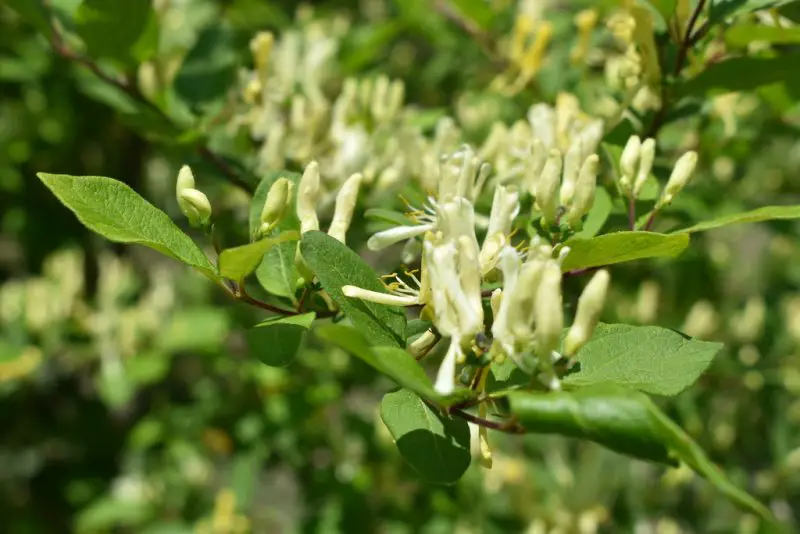
Lonicera ruprechtiana, or Ruprecht Honeysuckle, is a deciduous shrub native to eastern Asia and valued for its dense habit and soft, yellow spring flowers. The blooms are mildly fragrant and appear in clusters before being followed by small red or orange berries in early summer. Its leaves are medium green, broad, and oval, forming a lush, full canopy throughout the growing season.
This honeysuckle grows well in USDA zones 4 through 7 and adapts to a range of soil types, provided they are well-drained. It tolerates sun to partial shade and typically reaches 6 to 10 feet in height and width. Pruning should be done after flowering to maintain its form and prevent overgrowth, especially in formal garden settings.
Ruprecht Honeysuckle is used for ornamental hedges, screens, or foundation plantings and offers seasonal interest through both flowers and fruit. While not invasive, it is fast-growing and provides excellent habitat for birds and pollinators. Its dense foliage can be used to create privacy or to fill in large landscape areas with minimal maintenance.
FAQs About Types of Honeysuckle Plants
What is the difference between vining and shrub honeysuckle?
Vining honeysuckles, such as Lonicera sempervirens and Lonicera periclymenum, are climbing plants that twine around structures like trellises, fences, or arbors. They are ideal for vertical spaces and produce clusters of tubular flowers that attract hummingbirds and butterflies. Shrub honeysuckles, like Lonicera tatarica or Lonicera maackii, are free-standing and often used for hedges or natural screens. They may have fragrant flowers, berries, and dense branching, making them excellent for wildlife habitat.
Are all honeysuckle species fragrant?
Not all honeysuckles are fragrant, but many are. Fragrant varieties include Lonicera fragrantissima (Winter Honeysuckle), Lonicera periclymenum (Common Honeysuckle), and ‘Scentsation’ Honeysuckle. Others, like Lonicera sempervirens (Trumpet Honeysuckle), may have little to no scent but still produce beautiful, nectar-rich flowers that attract pollinators.
Which honeysuckle varieties are invasive?
Some honeysuckle species are considered invasive, particularly Lonicera japonica (Japanese Honeysuckle) and Lonicera maackii (Amur Honeysuckle). These species spread rapidly, outcompete native vegetation, and can damage local ecosystems. Gardeners should check regional guidelines and opt for native or non-invasive alternatives like Lonicera sempervirens or Lonicera hispidula.
Do honeysuckle plants attract hummingbirds and pollinators?
Yes, many honeysuckle varieties are excellent pollinator plants. Vining types with tubular flowers, such as Major Wheeler, Mandarin, and John Clayton, are particularly attractive to hummingbirds. Bees, butterflies, and other beneficial insects also visit honeysuckle blossoms, especially fragrant or brightly colored ones.
Can honeysuckle grow in pots or containers?
Some compact honeysuckle cultivars, such as Honey Baby Honeysuckle or Scentsation, can be grown in large containers. Ensure the pot has good drainage and provide a support structure if the variety is vining. Container-grown honeysuckles will need regular watering, feeding, and occasional root pruning to thrive.
What are the best USDA zones for growing honeysuckle?
Honeysuckles grow in a wide range of USDA zones, typically from zone 3 to zone 10 depending on the species. Cold-hardy types like Lonicera canadensis and Lonicera tatarica can survive harsh winters, while warm-climate varieties such as Mexican Honeysuckle thrive in zones 8 through 11. Always check the specific hardiness range for the variety you are planting.
When do honeysuckle plants bloom?
Bloom time varies by species, but most honeysuckles flower from late spring to early summer. Some varieties, like Major Wheeler and Scentsation, bloom continuously through summer and even into fall. Lonicera fragrantissima is an exception, often blooming in late winter to early spring when little else is in flower.
How can I prune honeysuckle plants?
Prune honeysuckles after their main flowering period to maintain shape, remove dead wood, and encourage new growth. Vining types may need more aggressive thinning to prevent them from becoming tangled or overgrown. Shrub honeysuckles should be pruned to maintain their form and promote healthy flowering.
Are honeysuckle berries edible?
Some honeysuckle berries are edible, such as those from Lonicera caerulea (Honeyberry), but many common varieties produce berries that are mildly toxic to humans. Lonicera tatarica and Lonicera japonica both bear berries that should not be consumed. Always identify the species carefully before considering eating honeysuckle fruit.
What pests or diseases affect honeysuckle?
Honeysuckles are generally low-maintenance, but they can be affected by aphids, powdery mildew, and leaf spots. Good air circulation, proper pruning, and avoiding overhead watering can reduce disease risk. Choose disease-resistant cultivars like Major Wheeler for better resilience in humid or wet climates.
How fast does honeysuckle grow?
Many honeysuckle vines grow quickly, adding several feet per year under optimal conditions. Varieties like Japanese Honeysuckle can grow aggressively, while others like John Clayton have a more moderate pace. Shrub types grow more slowly but still provide good coverage within a few seasons.
Can honeysuckle be used as ground cover?
Yes, certain honeysuckle species like Lonicera hispidula and Lonicera japonica can spread across the ground and serve as dense, flowering ground cover. This is useful for erosion control or naturalizing large areas, but invasive types should be monitored closely.
What soil conditions do honeysuckle plants prefer?
Most honeysuckles prefer well-drained, moderately fertile soil with a neutral to slightly acidic pH. They are adaptable to various soil types, including loamy, sandy, or clay soils, as long as drainage is sufficient. Amending soil with compost can improve flowering and overall plant vigor.
Do honeysuckles lose their leaves in winter?
It depends on the variety and climate. Many honeysuckles are deciduous and drop their leaves in winter, particularly in colder zones. However, some, like Lonicera fragrantissima and Honey Baby, are semi-evergreen to evergreen in mild regions. Their year-round foliage can provide visual interest even outside of blooming season.

